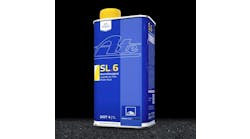Impending New Tariff Puts Domestic Manufacturers in a Net Positive Position
Our recent conversations with dealers leave us with a view that retail sell-out trends showed strength in August with a notable pickup in momentum from July. From a volume standpoint, surveyed dealers reported they saw unit sales improve roughly 3% to 4% compared to the prior year’s period and came in notably above recent growth rates observed in our tire demand index.
As Mother Nature can single-handedly dictate the ebbs and flows of sellout trends in the tire industry, climate conditions were a noteworthy topic last month as we note that temperatures across the country were largely in-line with August 2018 but still elevated when compared to 20th Century averages. However, we point out that the comparisons from the prior year’s period come off a significantly elevated base. More specifically, August 2018 saw 17 states report a month that was in the top 10% warmest August’s on record with six states reporting their warmest August ever.
Fast forward to August 2019 and our data indicates that 11 states experienced an August that was in the top 10% warmest August’s on record with temperatures markedly elevated in the Western region. Such hot temperatures can place a notable strain on vehicles which could cause any number of problems that will lead consumers to bring their vehicles into repair shops which could reveal additional problems and allow dealers to upsell customers on other items like tires. In fact, that seemed to be the case among our dealer contact base as the Northwestern and Southwestern regions reported replacement activity that was significantly above the rest of our contact base (approximately 5% to 6%).
Additionally, although precipitation levels across the country were slightly below last year’s levels similar to temperatures, the Midwestern region experienced historically elevated rainfall levels as five states in that region recorded a month that was in the top 10% wettest August’s ever while Nebraska and Kansas experienced their wettest August on record. This, in addition to the excessive rainfalls resulting from Hurricane Dorian sweeping along the eastern seaboard, should lend an additional sellout tailwind to the month of September.
Looking closer at the recent trajectory of raw material costs, the basket of raw materials to make a common replacement vehicle tire fell 6.5% on a year-over-year basis in August while decreasing 3.1% from July; this is rather notable as this is the second time in two months that our raw material index has declined on a year-over-year basis since March 2018.
From a quarterly perspective, raw material costs rose approximately 1.5% year-over-year in 2Q19 while holding current spot prices flat would yield a 5.6% year-over-year decrease in input costs in 3Q19 to “build a tire” (-6.4% from 2Q to 3Q). We note that we continue to observe notable movements lower in raw material cost pressures as just last month raw material prices were projected to fall 3.9% year-over-year in 3Q19 while sequentially decreasing 5% from 2Q to 3Q; we also point out that in June 3Q19 costs were projected to rise 1% with only a marginal decline from 2Q to 3Q.
In assessing raw material price movements, we note carbon black continues to experience cost pressures but its year-over-year growth rate has moderated from double-digits to mid-single-digits, natural rubber prices are attempting to continue their rebound but remained flat year-over-year last month while declining from July’s price levels after rising for four consecutive months while crude oil prices continue to slide double-digits year-over-year after attempting a turnaround at the beginning of the year.
Meanwhile, synthetic rubber costs have accelerated their downward trend and have remained negative for five straight months year-over-year, price pressures on reinforcement items (cord, fabric, etc.) continue to track negative year-over-year at a mid-single-digit rate.
Although tire industry trends profit levels are often held hostage to raw material cost inflation, weather patterns, and competitive dynamics (supply/demand, capacity additions, etc.), we reinforce our view that the market continues to strengthen and that the outlook remains healthy for dealers and wholesalers.
In fact, we note the majority of individuals in the dealer community we have spoken with this month have an upbeat outlook for volume trends going forward, driven by the following factors: (1) continued expansion of the car parc, including an uptick in the number of cars entering the first replacement cycle; (2) the ongoing belief that there is a modest amount of pent-up demand on the sidelines from deferred maintenance, especially given the lackluster results throughout 2017 and most of 2018; (3) continued upward trajectory of miles driven and (4) a solid economic backdrop that has created a healthy, confident consumer. As such, we expect sell-out trends in 2H19 to become more aligned with this level of GDP growth.
Until next time, keep the tires rolling out the door.
P.S. – If you would like to be included in our monthly discussions with dealers, please do not hesitate to reach out to me directly at [email protected].
Monthly survey
A number of independent tire dealers were surveyed concerning current business trends. The results of the August 2019 survey are compared with those of August 2018.
Replacement Tire Sales – Sellout Levels Remain Elevated Along with the Hot August Temperatures
Dealer commentary suggests consumer demand for PLT replacement tires rose in August compared to the prior year’s period. The net number of respondents indicating they saw an increase in demand year-over-year was 61.5% of contacts compared to August 2018’s 24.1% of contacts experiencing growth.
We note that our tire demand index was up 30.1% year-over-year (up 23.1% from June) and we continue to hold a perspective that volumes are becoming more closely aligned with the current level of GDP growth as our dealer contacts have seen fourteen straight months of positive volume growth. This view is reinforced given a more stable industry backdrop with raw material cost pressures declining and we continue to expect mix trends to improve through the rest of the year.
A Look at Mix Trends in the Market
In response to the best and worst performers, our recent survey revealed that Tier 2 brands were the segment of most significant growth among our surveyed contacts for the third consecutive month. Conversely, Tier 3 remained at the bottom of our rankings for the second consecutive month while Tier 1 stood pat in the middle spot.
The dynamic of Tier 2 retaining the top spot for months at a time was only a matter of time as we have long predicted that the combination of price and performance that Tier 2 tires provide continues to make it the segment of the most significant growth among our contact base over one, two, and three-year time frames (as well as twelve of the last twenty-one months). We are not surprised to see Tier 3 weakness continue (has not been atop our rankings since February 2019) as we have long theorized that any strength seen in Tier 3 is transitory in nature as we expect consumers to opt for higher quality and performance given consumer spending/confidence remains healthy and labor market conditions remain historically tight.
We point out that on a longer-term basis, Tier 3 brands have been ranked or tied for last place by our respondents in 28 of the past 60 months (has only been atop our rankings 4 times in the last 23 months). With that being said, slowing global/domestic growth has increased the likelihood that Tier 3 could exhibit outperformance among higher quality nameplates in the near-term especially when considering recent pricing actions (Michelin, Bridgestone) by top manufacturers to offset some of these pressures.
However, acting as a potential offset to these conditions is impending implementation of new tariff announcements as this puts domestic manufacturers in a net positive position. Higher quality domestic brands could see some benefit in the US replacement market as imported products become more expensive and could result in consumers purchasing quality products/brands as the playing field levels and price gap shrinks.When examining the landscape from a longer-term view, we continue to believe that the pricing environment in North America will remain rational and in-line with raw material costs. We expect Tier 1 and Tier 2 producers to continue remaining disciplined in their efforts to manage the price/volume trade-off in order to maximize operating profit rather than market share, as well as capture the mix benefit from the shift to HVA tires.
We are pleased with the disciplined approach to production schedules that we have seen at the manufacturing level and global inventory levels remain relatively lean. Moreover, dealers and wholesalers are being tactical with their approach to inventory allocation given legislative moves (tariffs), recent pricing actions, and volatile raw material prices; essentially, downstream players have been directing orders in a way to capitalize on pricing spreads in the market.





